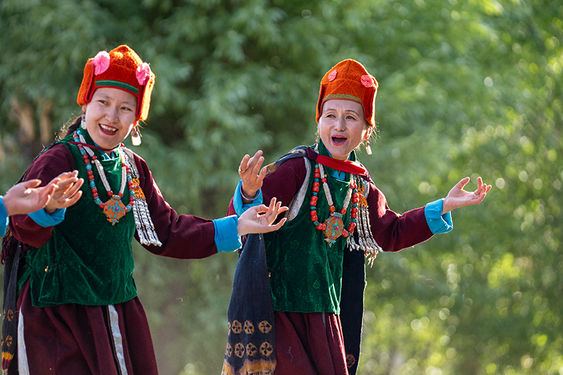
"Give the ones you love wings to fly, roots to come
back, and reasons to stay."
- Dalai Lama
I had always dreamt of exploring the majestic landscapes of Ladakh, India. Nestled high in the Himalayas, Ladakh was where the heavens seemed to touch the earth, and the air was thin. As an avid traveller, I yearned to experience this remote region's raw beauty and spiritual tranquillity.
My journey began in Leh, the capital of Ladakh, perched at an altitude of over 10,500 feet. Stepping off the plane, I was immediately struck by the crisp, cool air and the stark, barren mountains surrounding me. The altitude was a challenge, but I was prepared. Slowly acclimatising, I spent the first few days exploring the town, visiting monasteries, and interacting with the friendly locals. The guest house owner, the kind lady, welcomed me with warm smiles and a cup of honey, ginger and lemon tea.
AFTERNOON
ENCHANTMENT
An afternoon spent watching the mesmerising Ladakhi dances, set against the perfect backdrop of the sparkling white Shanti Stupa, was truly enchanting. The graceful movements of the dancers, reflecting the rhythms of ancient traditions, blended beautifully with the serene beauty of the Stupa, creating a memorable and captivating experience.

Leh's Enchanting Twilight
As night falls, the city of Leh lights up, its streets aglow with a warm, inviting charm. Majestic snow-capped Stok Kangri (20145 ft) stands tall in the backdrop, a silent guardian under the starry sky. The mountain's serene beauty adds a touch of romance to the evening, making it the perfect end to the first day in Leh, where every moment feels like a timeless embrace.

HIMALAYAN GOMPAS
Gompas, scattered throughout the Himalayas, are synonymous with monasteries. Gompas come in various sizes, from humble structures to sprawling campuses, yet they all share a common purpose: to nurture and guide monks or nuns while tending to the spiritual needs of the surrounding lay community.
THE SPARKLING-WHITE
SHANTI STUPA
On Changspa's ridge, so high and bright, Stands the Shanti Stupa in purest white. Built-in 1991 with peace in mind by Japanese monks for all mankind.
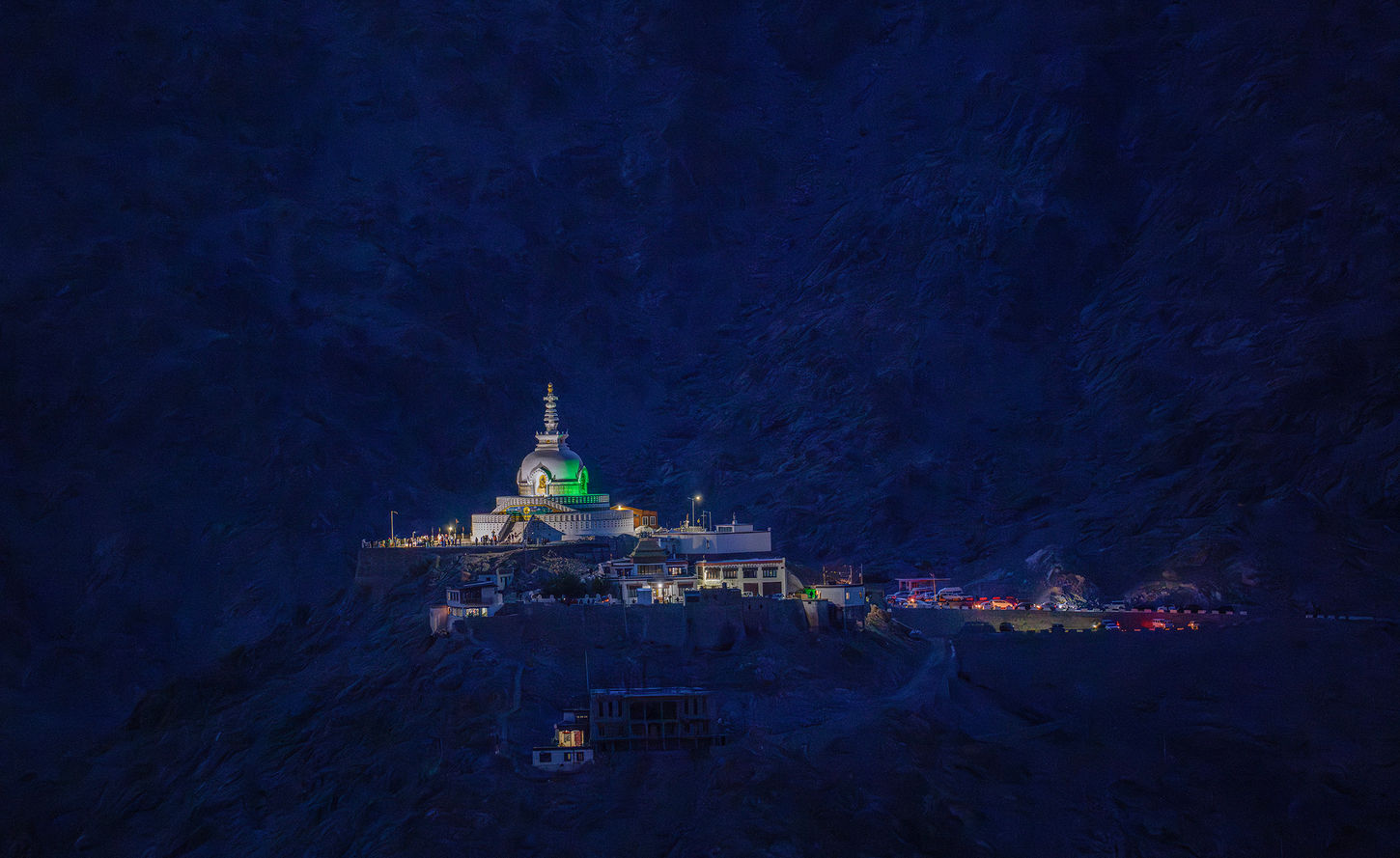
HEMIS FESTIVAL
AT HEMIS MONASTERY
The Hemis Festival, held annually at the Hemis Monastery, is a vibrant celebration of Tibetan Buddhism and one of the region's most significant cultural events. This grand festival, typically in June or July, marks the birth anniversary of Guru Padmasambhava, the founder of Tibetan Buddhism. The Hemis Monastery, nestled in a serene valley surrounded by the stark beauty of the Himalayan landscape, comes alive with a burst of colours, music, and spiritual hunger during the festival.
The monks' sacred masked dance, known as the Cham dance, is the highlight of the Hemis Festival. Dressed in elaborate costumes and fearsome masks, the monks enact mystical tales of good triumphing over evil, accompanied by the haunting sounds of traditional Tibetan instruments like cymbals, drums, and longhorns. The dance, filled with symbolic gestures and vibrant energy, captivates the audience, providing a profound glimpse into the rich spiritual traditions of Tibetan Buddhism.
Visitors worldwide flock to Hemis Monastery during the festival to witness this unique cultural spectacle. The atmosphere is electric, with local Ladakhis and tourists mingling, exploring colourful stalls selling traditional handicrafts, and participating in the joyous celebrations. The Hemis Festival offers a profound spiritual experience and a chance to immerse oneself in Ladakh's rich cultural heritage.
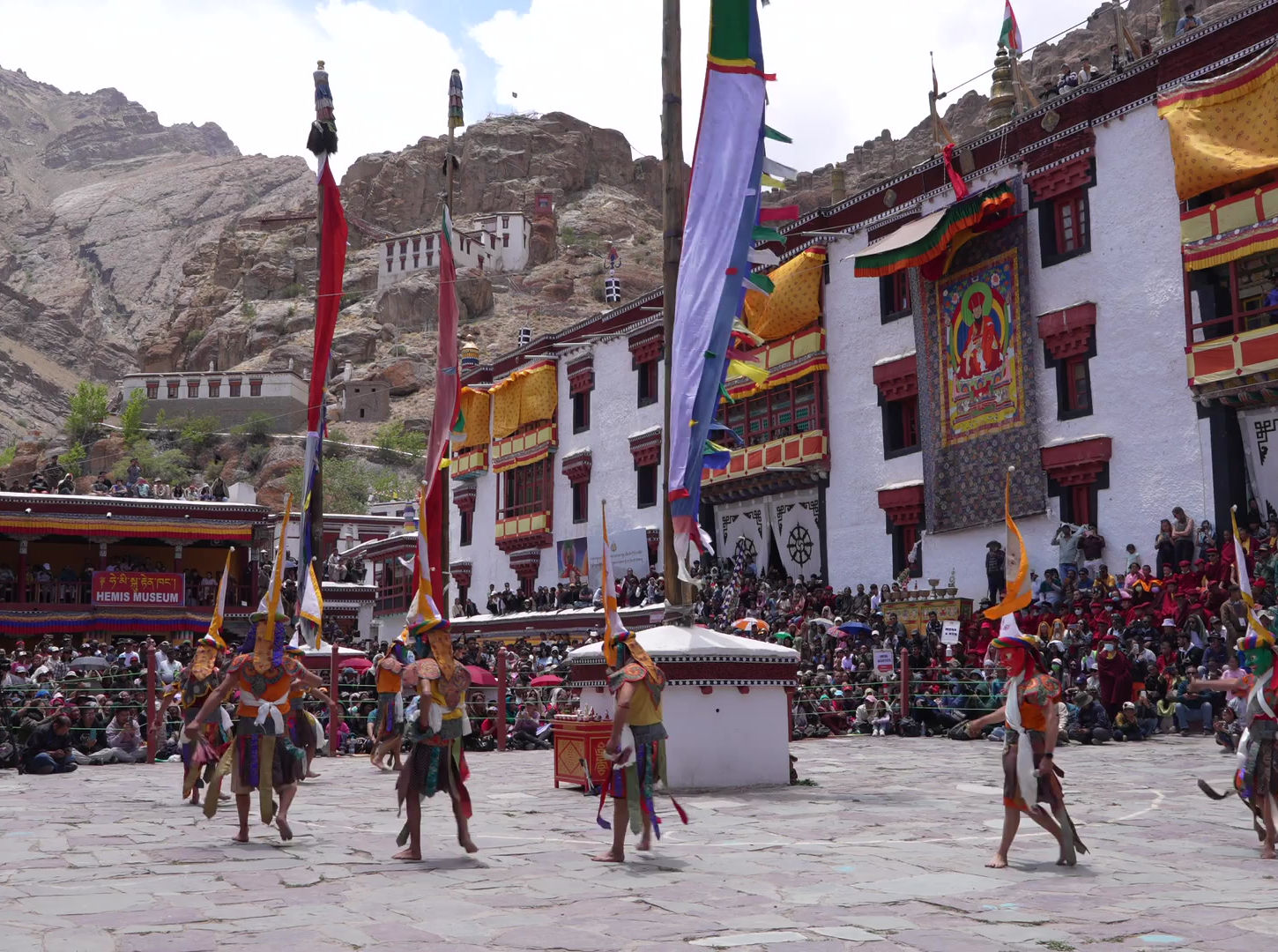
THIKSEY MONASTERY
Perched on a hilltop overlooking the Indus Valley, Thiksey Monastery is a magnificent example of Tibetan architecture and spiritual serenity. This twelve-story complex, often compared to the Potala Palace in Lhasa, houses a remarkable array of Buddhist art, including statues, thangkas, and ancient scriptures.
The panoramic views from the monastery, with snow-capped peaks and the winding Indus River below, add to the sublime experience, making Thiksey Monastery one of my favourite monastic experiences in seeking both spiritual solace and breathtaking beauty in Ladakh.
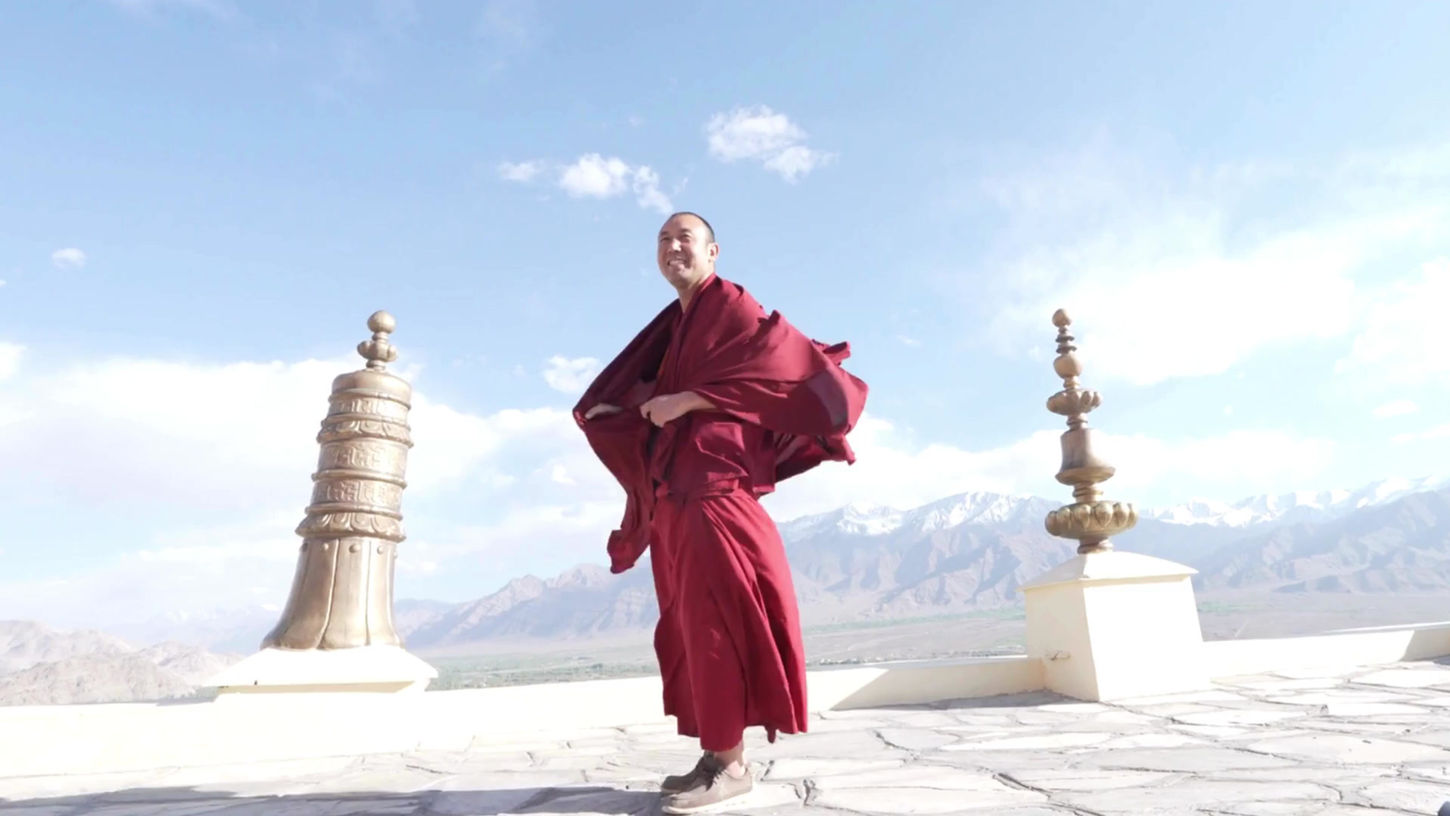
A highlight of Thiksey Monastery is the stunning 49-foot statue of Maitreya Buddha, which captivates visitors with its serene presence and intricate craftsmanship. As you explore the monastery, the peaceful ambience, punctuated by the soft chanting of monks and the fluttering of prayer flags, creates a deep sense of tranquillity.

NUBRA VALLEY
AND BEOND
The following day, we set out on an expedition to Nubra Valley and then to Pangong Lake, one of the world's most stunning and high-altitude lakes. The drive was treacherous, with winding roads that clung to the edges of steep cliffs. Our driver, Tashi, navigated the rugged terrain easily, sharing stories of his life in Ladakh and the cultural significance of the places we passed.
Confluence at Sangam Point
'Confluence a noun: a coming or flowing together, meeting, or gathering at one point.
We reached Nimmu, about 35 kilometres outside Leh. I rested my elbows on the railing by the smooth tar road of the Leh Srinagar highway. Far below me, at the base of vast and barren mountain ranges, the Indus River appeared shiny blue, and the Zanskar River seemed muddy green. Mighty forces converged and flowed together towards the striking blue horizon.
That is what life is, too, and a bit like our group, from all around the world with different faiths, colours, and ideas, gathered together a confluence of people to reflect and share the experience of exploring the high altitudes of wanderlust for the next couple of days.
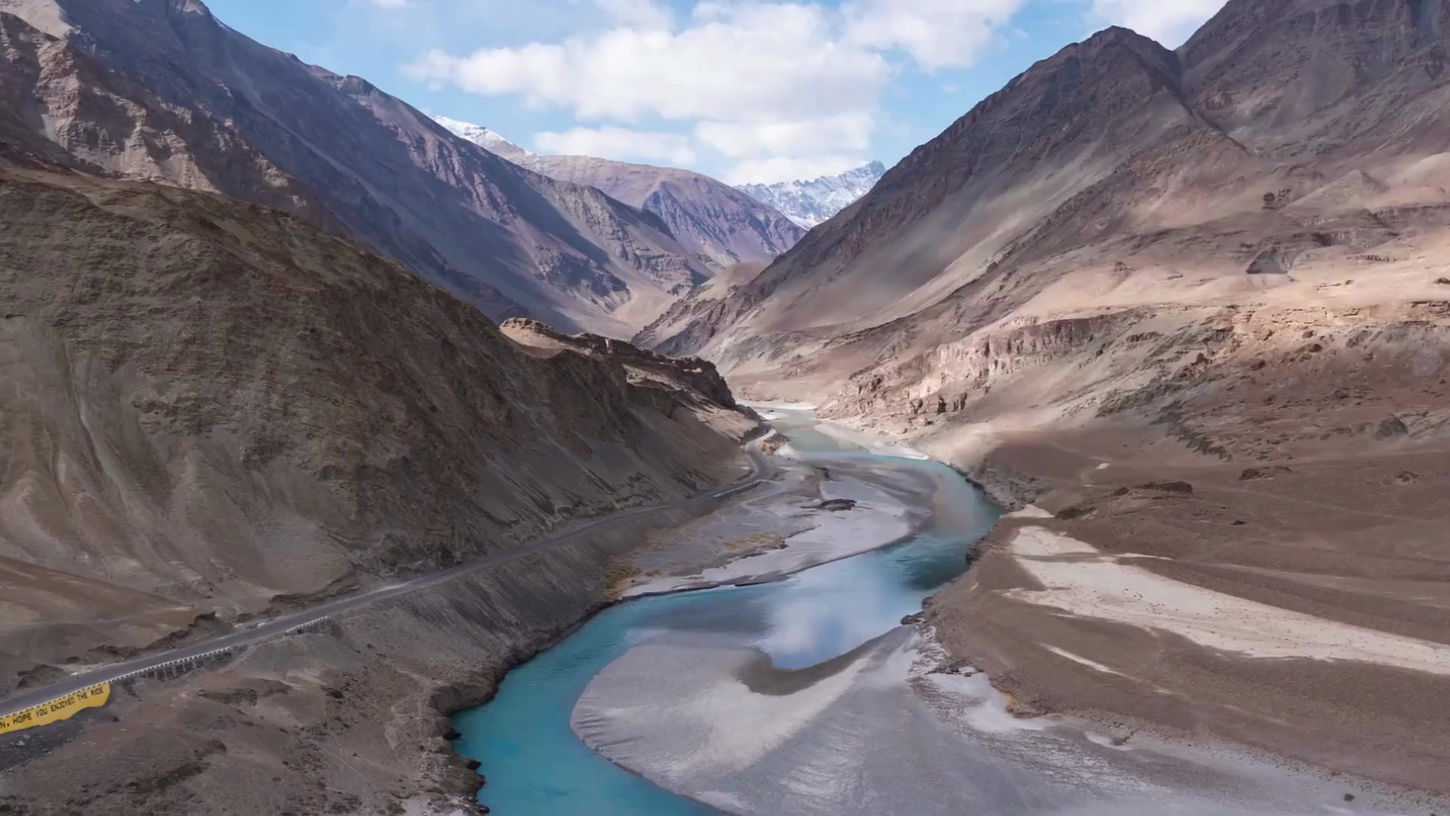
B R O K P A S
THE LAST OF THE ARYANS
High passes and picturesque landscapes with serene Gompas characterise Ladakh. The region is home to ethnic and tribal communities that live in relative isolation, and the landscapes are breathtaking, with some of the world's highest peaks in the Himalayas.
Located approximately 160 miles west of Leh, in a region commonly referred to as the Valley of the Aryans, are the four settlements of Dah, Hanu (sometimes merged into Dahanu), Darchik, and Garkon. The tall, green-eyed people who live in these villages, called Brokpa or Drokpa by the rest of the settlers in the area, are said to be pureblood Aryans, descended from soldiers who remained behind after Alexander's expansion campaign was abandoned. Or so the legend goes, and it has been passed down for many generations.
Read more at Portrait of Humanity : BROKPA PEOPLE

We have passed the Shanti Stupa as we continue our steady ascent; the mountaintop it formerly stood upon is hardly more than an anthill in the verdant valley below. Stok Kangri Peak, which stands at a little over 22,000 feet, appears to be at eye level, which heightens the sense of a shift in perspective and, by extension, the change in altitude. But we know it's all a mirage since we still need to make it to Khardung La, which is at an altitude of 18,380 feet. We had stayed in Leh for three days before venturing out.
Until recently, the route to Nubra Valley was the highest motorable road in the world. As we make our way across the South Pullu Army Camp, the air becomes increasingly frigid, almost chilling. There are a lot of pencil-sharp peaks and a deep gorge along the road, which turns into a dirt track as it winds its way down the snow-covered scree slopes of the corrugated mountains. The road appears to shrink with each abrupt, sharp bend.
Our vehicle follows a rickety van until a string of prayer flags appears. Oh yes, finally, we are at Khardung La. An excited voice screams from the back of the vehicle. This is the Ladakh Range, a section of the Trans-Himalayas that merges with the Kailash Range in Tibet.

TRADITIONAL LADAKHI
HOUSE IN SUMOOR
In the picturesque village of Sumoor, nestled in the Nubra Valley of Ladakh, a traditional Ladakhi house stands. Constructed from locally sourced materials such as stone, wood, and mud bricks, these homes are designed to withstand the region's harsh climatic conditions. Thick walls provide insulation against the biting cold winters, while flat roofs, often used for drying vegetables and grains, add to the practicality of the design.
The interiors are cosy and inviting, with low wooden ceilings and ornately carved pillars and beams. Large windows adorned with colourful prayer flags offer breathtaking views of the surrounding mountains and valleys. Central to these homes is the prayer room, reflecting the deep spiritual life of the Ladakhi people.
The inhabitants of Sumoor, often considered part of the Aryan people of Ladakh, add a fascinating dimension to the village's cultural landscape. They are believed to be descendants of the ancient Indo-European Aryans.

Read more at Portrait of Humanity : Aryan People
ECHOES OF THE SILK ROAD
As the evening light fades, the double-humped Bactrian camels, gentle giants remnants of the ancient Silk Road trade, roam gracefully across the golden sands. The air cools, and a serene hush falls over the valley.
In a time long past, the weary path unfurled before the wanderers, beckoning them onward in their quest for fertile lands and hidden havens. A journey into the unknown's depths stretched out before them. That transformed into the legendary 'Silk Road', which spanned from China to Central Asia.
My mind drifts, excitement clings, and I almost catch the faint echoes of ancient traders' and their caravans' in the distance, clattering on these same worn paths. The sky stages a drama in hues: soft purples and pinks deepen to the fervent blush of oranges and reds, each shade deepening the scene. The snow-capped mountains add a sense of intimacy to the evening. As twilight claims the day, the camels cast stark silhouettes against the fading light, crafting a tableau so perfect that it captures the serene yet untamed essence of the dunes in Nubra Valley.
Far from home, where my journey began, I find peace and solitude—a brief moment, cradling the cherished tales of the Silk Road—oh, how I miss those moments of glad grace, where my mother would murmur, bedtime stories that filled my boyhood nights.

My breath came in shorter gasps, and a mild headache began to pulse at my temples. Someone handed me a small packet of dried apricots, a local remedy for altitude sickness. Now, I only have deep, slow breaths. I chewed on the sweet fruit and sipped plenty of water, feeling better as we continued our ascent. The Oximeter read 78; what a relief from 71!
Gompas all in white, little known villages we passed one by one; the beauty was seconed to none (Photos bellow). Finally, in the late afternoon, we arrived at Pangong Lake. The sight took my breath away—not from the altitude this time, but from sheer awe. The lake stretched out like a shimmering sapphire, reflecting the surrounding snow-capped peaks in its crystal-clear waters. The colours shifted with the changing light, from deep blues to vibrant turquoise, creating a mesmerising spectacle.

DAWN AT PANGONG TSO (LAKE)
At dawn's first light, Pangong TSO awakes. It is a mirror of tranquillity; as silence breaks, golden hues kiss the icy blue. It is a breathtaking scene—a dream come true. Mountains guard this tranquil gem. Their reflections are pure, like a precious diadem.
Ripples echo; in the morning's embrace, the crisp air sings a gentle song, nature's symphony peaceful and strong. Birds take flight in the soft, early morning light—graceful silhouettes in the morning's delight.
Each breath I take fills my lungs and soul with reverence and joy. As the sun ascends, the lake glows. Pangong TSO is a paradise below. In this serene, majestic dawn, all worries fade, and all doubts are gone. In the heart of Ladakh's embrace, Pangong Tso reveals its grace.
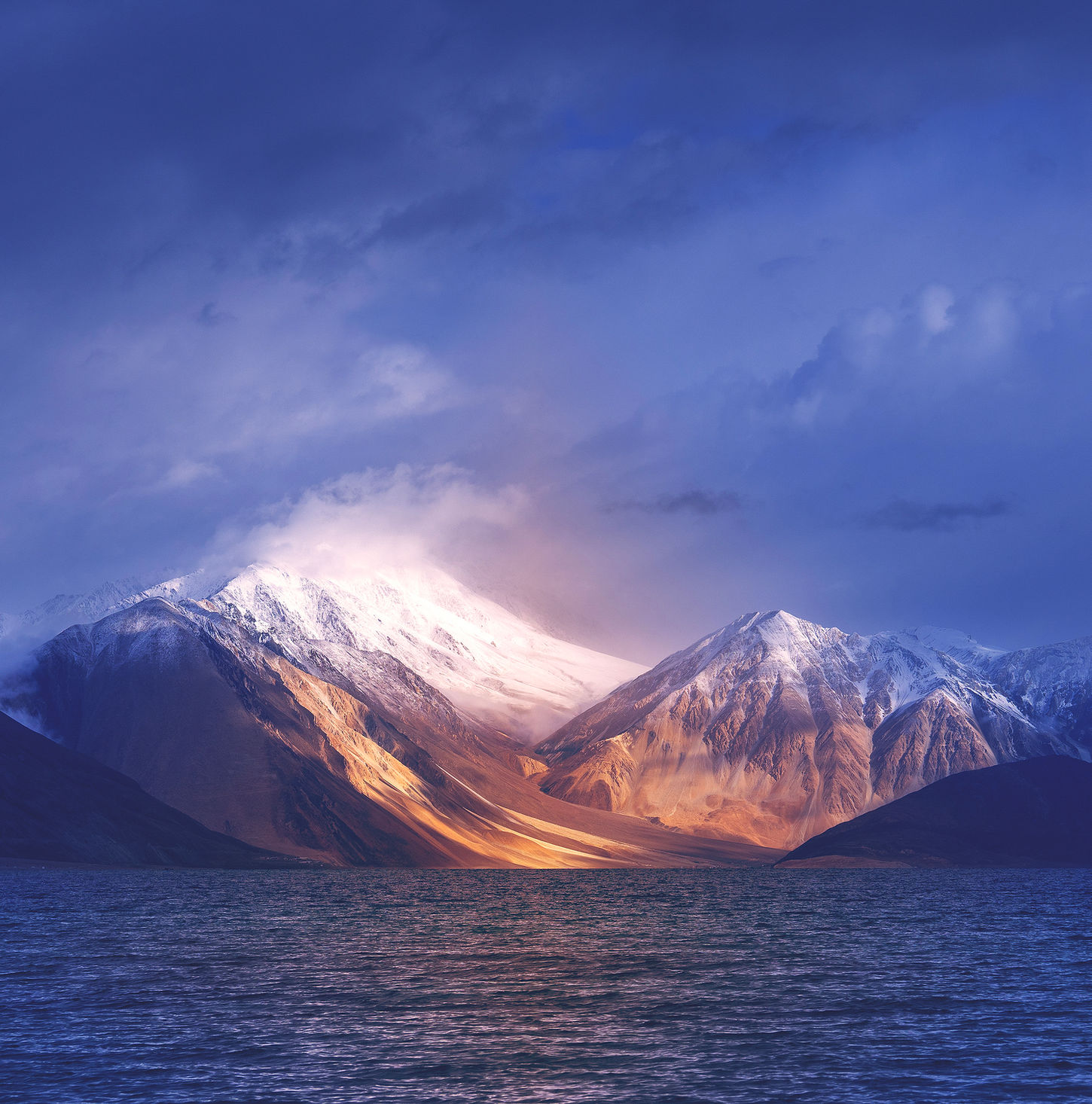
As the day ends, I settle into bed, reflecting on this incredible journey. Thank you for joining me on this unforgettable adventure. Places, faces, and memories would fade away as time passed, but the moments, sights, and sounds of the high-altitude adventure in Ladakh would come home with me and stay somewhere deep in my heart.
Emperor Jahangir had once said about Kashmir region,
"Agar firdaus bar roo-e zameen ast, Hameen ast-o, hameen ast-o, hameen ast!"







